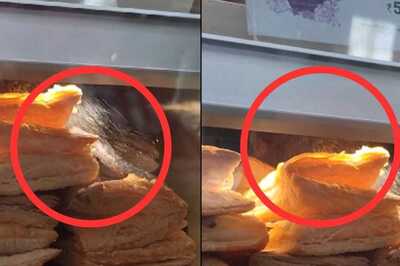
views
WELLINGTON/SYDNEY New Zealand’s central bank surprised markets on Wednesday by expanding its bond-buying programme and warned that policy rates might have to go below zero to revive the coronavirus-battered economy as the country was plunged back into lockdown.
The Reserve Bank of New Zealand expanded its large scale asset purchase (LSAP) programme to as much as NZ$100 billion ($65.39 billion), from NZ$60 billion previously, and extended the deadline for purchases out to mid-2022. It left interest rates at an all-time low of 0.25%, as widely expected.
Underlining policymakers’ readiness to step-up support, the RBNZ said it is also actively considering a package of additional monetary tools, including negative interest rates and low-cost funding to banks. The purchase of foreign assets also remain an option.
“The Bank sent its clearest message yet that negative rates are coming,” said Ben Udy of Capital Economics.
“We still expect the Bank to wait until next year before bringing the OCR into negative territory, though the risk now is that the Bank moves sooner rather than later.”
In response to the central bank’s statement, the New Zealand dollar slipped 0.5% to $0.6540.
The central bank’s dovish tone comes as New Zealand re-introduced mobility restrictions earlier in the day due to the emergence of a coronavirus cluster after sailing through for more than 100 days without COVID-19 cases at home.
The discovery of four infected family members in Auckland led Prime Minister Jacinda Ardern to swiftly reimpose tight restrictions on movement in New Zealand’s biggest city and travel limitations across the entire country.
“Given the ongoing health uncertainty, there remains a downside risk to our baseline economic scenario,” RBNZ said in a post-meeting statement.
In addition, members agreed the central bank should retain the flexibility to adjust the pace and composition of bond purchases.
“The Committee also agreed that any future move to a lower or negative OCR, if complemented by a Funding for Lending Programme, could provide an effective way to deliver monetary stimulus in addition to the expanded LSAP if needed.”
The RBNZ stunned markets with a 75-basis-point cut in March as the coronavirus surfaced in the country, but has since left it unchanged.
The pandemic jolted the economy into its worst slump in nearly three decades in the first quarter, and gross domestic product is expected to have contracted further in the June quarter, tipping the country into its first recession since 2010.
Recent data had indicated that the economic impact of the pandemic was not as dire as first feared, with unemployment rates falling, inflation seen picking up and the housing market being resilient.
All the same, the Auckland virus cluster has heightened the uncertainty about the outlook.
“Short of cutting the OCR today, it’s difficult to imagine a more dovish outcome,” ANZ bank’s chief economist Sharon Zollner said.
“The bad news delivered last night has ramped up uncertainty, but certainly done nothing to reduce the odds of further OCR cuts next year.”
($1 = 1.5293 New Zealand dollars)
(Editing by Shri Navaratnam)
Disclaimer: This post has been auto-published from an agency feed without any modifications to the text and has not been reviewed by an editor


















Comments
0 comment